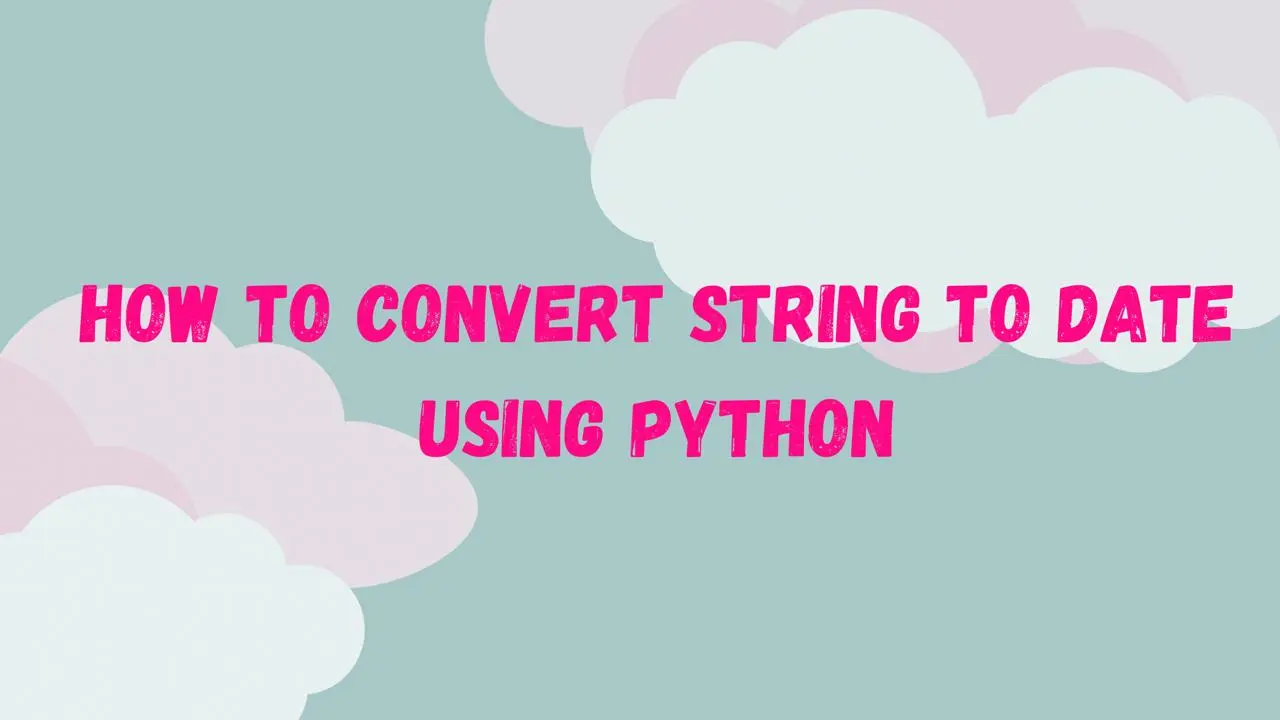How to Convert String to Date Using to Python
Feb 2, 2024
2 mins read

A Comprehensive Guide to Converting Strings to Dates in Python
In Python, dealing with dates and times is a common task in many applications, ranging from data analysis to web development. One essential operation is converting strings representing dates into Python datetime objects. In this blog post, we’ll explore various methods to achieve this conversion, along with practical examples.
Setting up:
Before we dive into the code, ensure you have Python installed on your system. You can download and install Python from the official website (https://www.python.org/). Additionally, we’ll be using the built-in datetime module, so no external packages are required.
Method 1: Using strptime() function:
The strptime() function from the datetime module allows us to parse a string representing a date and time according to a specified format.
|
|
Explanation:
- We import the
datetimemodule. - Define the string representing the date (
date_string) and the format (date_format) it is in. - Use
strptime()function to convert the string to a datetime object.
Method 2: Using dateutil.parser:
The dateutil.parser module provides a convenient method to parse date strings in various formats without explicitly specifying the format.
|
|
Explanation:
- Import the
parsermodule fromdateutil. - Pass the date string to the
parse()function, which automatically detects the format and returns a datetime object.
Method 3: Using pd.to_datetime() (for pandas users):
If you’re working with pandas, you can utilize the to_datetime() function to convert date strings in DataFrame columns to datetime objects.
|
|
Explanation:
- Import pandas as
pd. - Use
to_datetime()function to convert the date string to a datetime object.
In this blog post, we explored three different methods to convert strings to date objects in Python. Depending on your specific use case and preferences, you can choose the method that best suits your needs. Whether it’s parsing dates with a known format using strptime(), flexible parsing with dateutil.parser, or handling dates within pandas DataFrames, Python offers versatile solutions for working with date strings. Experiment with these methods in your projects and see which one fits your requirements seamlessly.
Popular Tools
Recent Articles
- Mastering Localstorage in Javascript Your Comprehensive Guide
- CSS Vertical Alignment 11 Effective Implementation Methods
- The Ultimate Guide to Const Assertions in Typescript
- Typescript Typecasting a Step to Step Guide
- How to Use DangerouslySetinnerHtml in React Application
- CSS Tutorial: How to Create a Custom Mouse Cursor
- Types vs Interfaces in Typescript
- How to Switch Node Version on Macos
- How to Switch Node Version on Ubuntu
Sharing is caring!